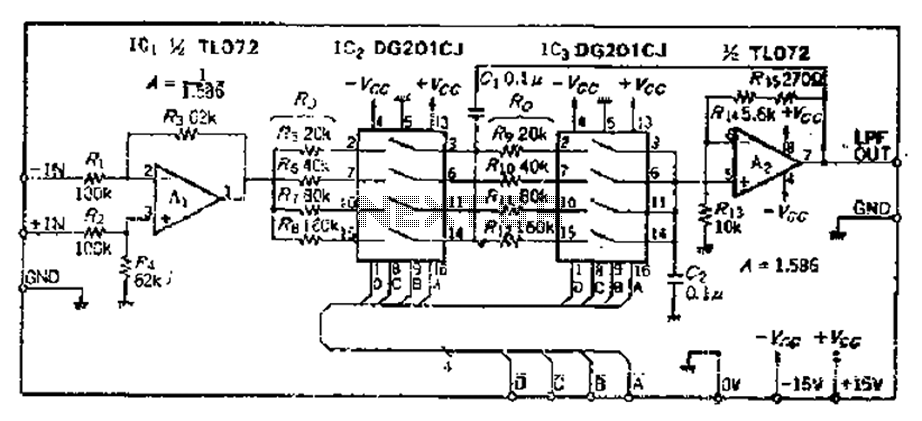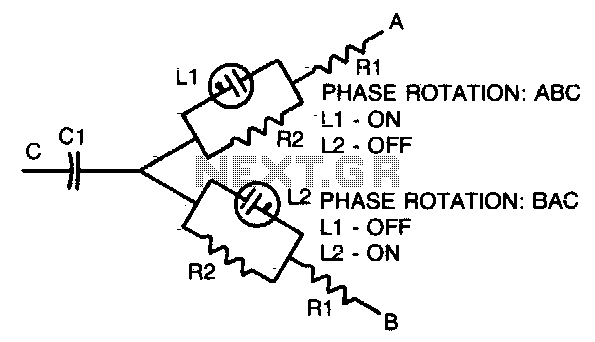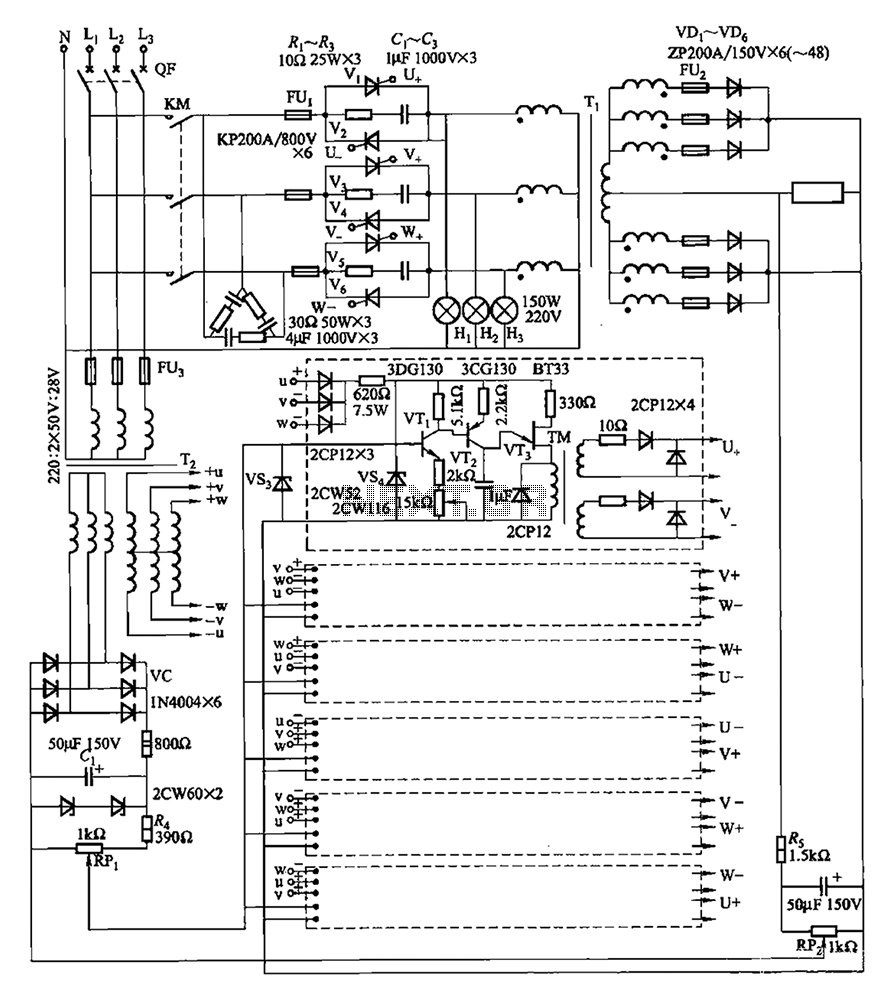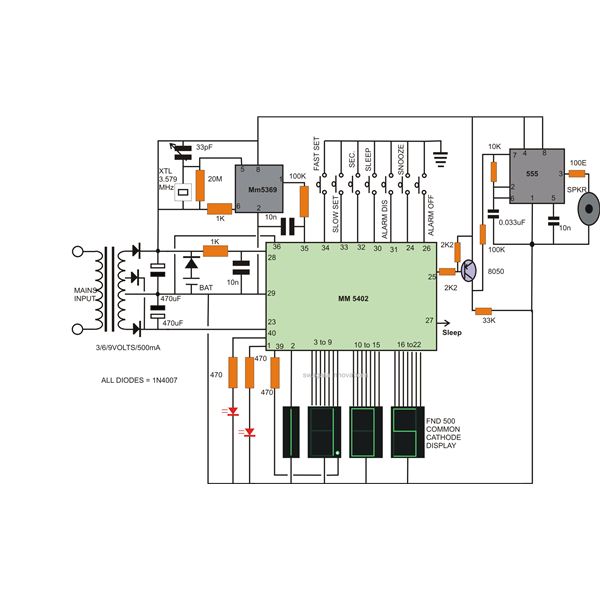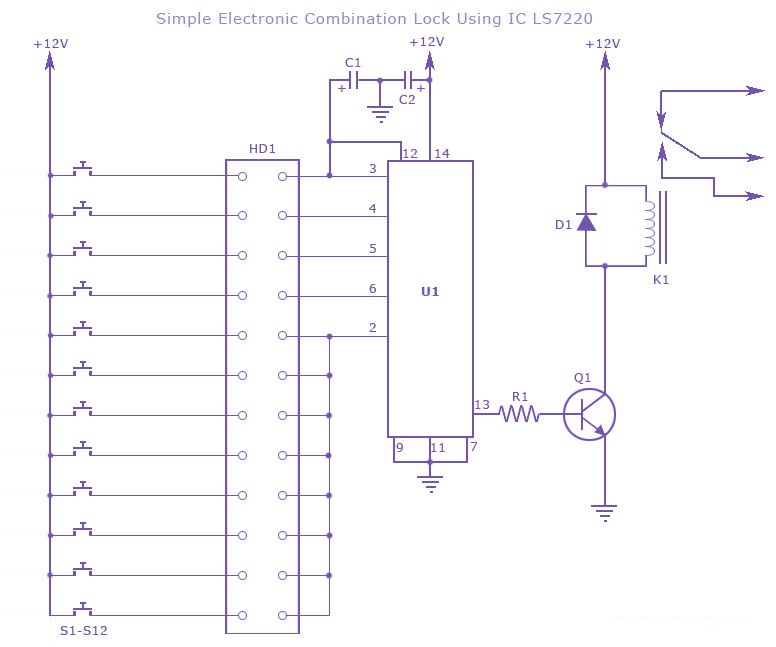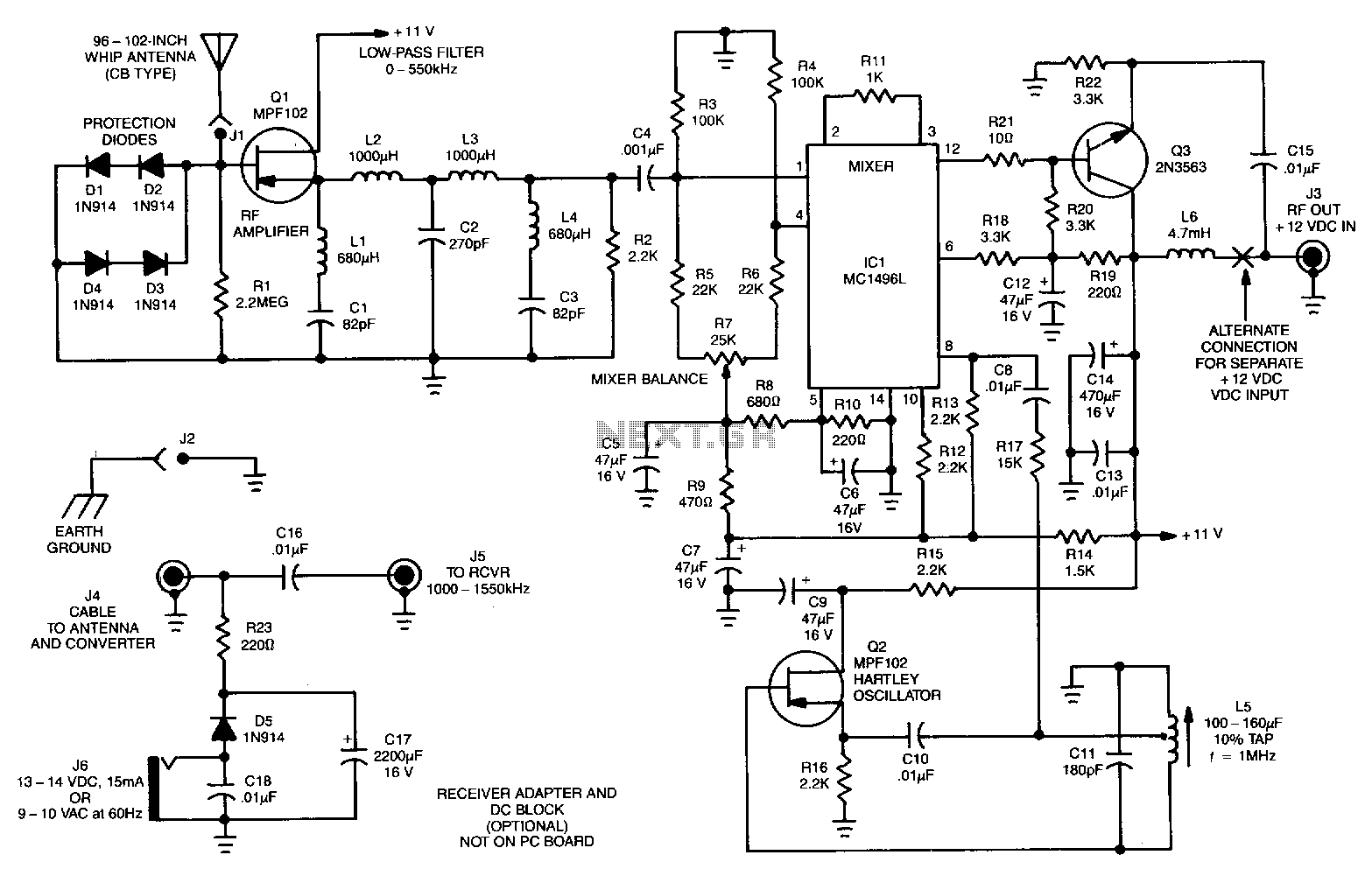
phase lock loop frequency synthesizer
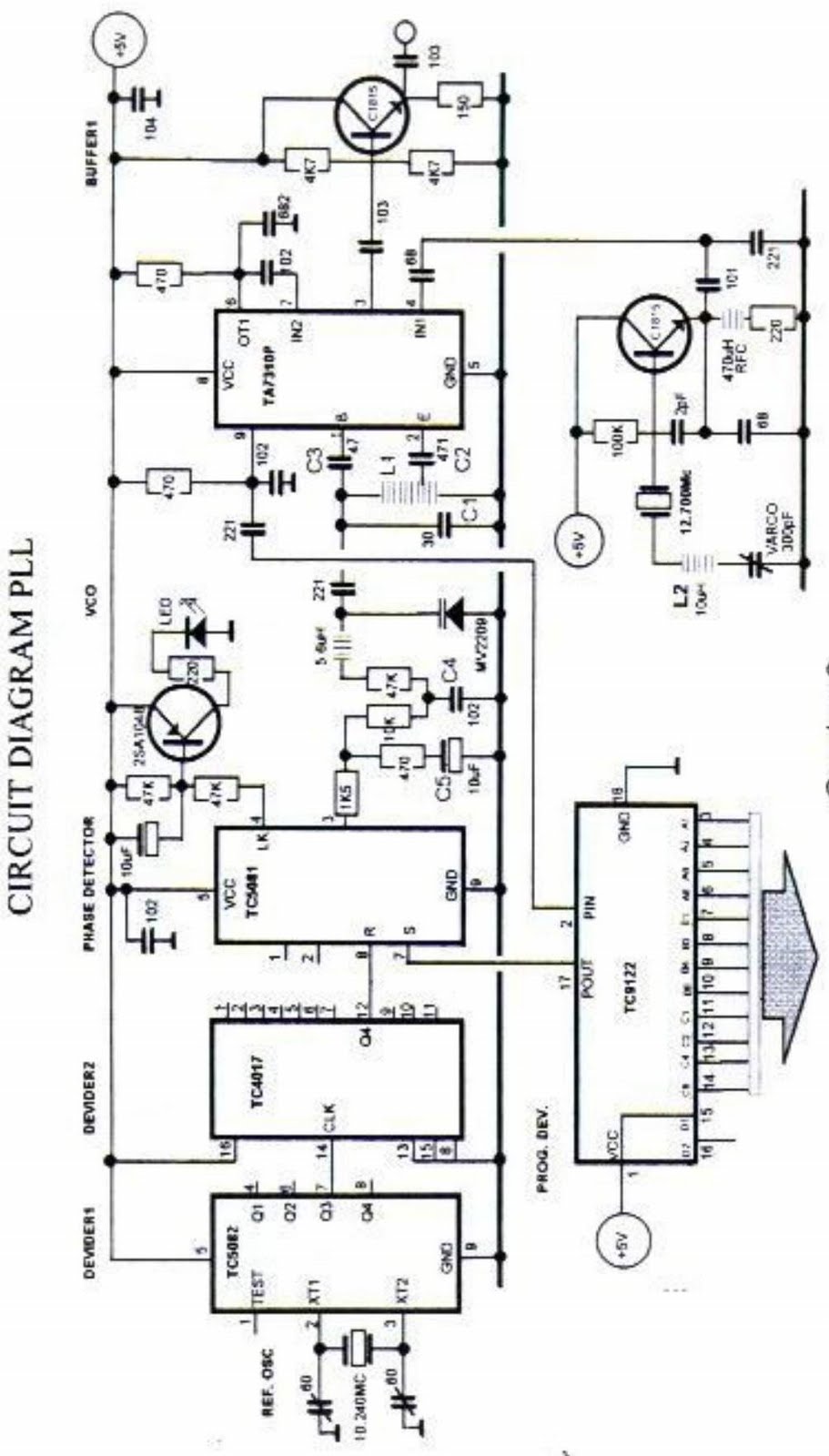
The primary function of the phase-locked loop (PLL) phase detector is to compare the input phase of the voltage-controlled oscillator (VCO) signal with a reference signal, resulting in a phase difference. This phase difference generates a voltage difference, which is filtered by the loop filter and applied to the VCO. The control voltage adjusts the VCO frequency to minimize the discrepancy between the reference signal and the feedback signal from the VCO. When the loop is locked, the control voltage stabilizes at a level where the average frequency of the feedback signal matches the reference frequency. The effectiveness of a PLL design is heavily reliant on the loop filter design, as it smooths out voltage fluctuations caused by phase differences detected by the phase detector. Various PLL configurations can be created, but this paper focuses on a detailed PLL design to facilitate understanding of its operation. A simple PLL circuit can be constructed using integrated circuits (ICs) such as the MC145106 and MC145163, which are widely available and capable of performing complete functions. Other ICs like the TC9122, TC5081, TC5082, and TC4017 can also be utilized, although this paper does not discuss their use. The proposed PLL design operates at a frequency of 1 KHz, integrated with an analog tuner that has a bandwidth of 1 to 2 KHz for precise frequency adjustments (less than 1 KHz). The PLL is designed to function within a frequency range of 13.700 to 14.699 MHz for use in a transceiver with a carrier oscillator or a 10.7 MHz single sideband (SSB) filter. The operating frequency is set using a three-digit thumb wheel display, indicating hundreds, tens, and units of KHz. The PLL comprises several components: a reference frequency generator (1 KHz), phase detector, loop filter, VCO, programmable oscillator, frequency divider, and feedback mechanism. The reference frequency generator employs the TC5082 to generate a 10 KHz signal, which is divided by the TC4017 to produce a 1 KHz signal used by the phase detector TC5081. The VCO selected for this design is the TA7310, which also functions as a mixer for feedback into the phase detector via a programmable divider. The input to the programmable divider is derived from the frequency reduction of the VCO relative to the crystal frequency. The VCO frequency and bandwidth are tailored to operate between 13.700 MHz and 14.700 MHz for instruments utilizing a 10.7 MHz intermediate frequency (IF). Varactor diodes, such as MV2205, MV2209, BA150, and SMV610, are employed to control the VCO frequency, with each type offering different capacitance ranges specified by the manufacturer. The programmable divider, utilizing the TC9122 IC, can divide the feedback frequency from the VCO by up to 3999. Consequently, the VCO feedback cannot be directly input to the TC9122 and must first be mixed with an oscillator frequency before being fed into the divider. The mixer oscillator frequency is selected to ensure that the reduction does not exceed the TC9122's capabilities. For example, the PLL is designed to operate between 13.700 MHz and 14.699 MHz, using a mixing oscillator frequency of 12.700 MHz (resulting in a difference of 1 to 1999 MHz). Programming the TC9122 is accomplished using Binary Coded Decimal (BCD), allowing for decimal number input.
The PLL design described involves a systematic approach to frequency synthesis and phase comparison, ensuring precise control and stability. The phase detector continuously monitors the phase relationship between the reference and VCO signals, generating an error signal proportional to the phase difference. This error signal is filtered by the loop filter, which smooths out rapid voltage changes, thereby providing a stable control voltage to the VCO. The VCO, in turn, generates a frequency that is adjusted based on the control voltage, ensuring that the output frequency aligns with the desired reference frequency.
The loop filter's design is critical, as it determines the transient response and stability of the PLL. A well-designed loop filter can effectively dampen oscillations and provide a stable output, while a poorly designed filter may result in instability and oscillatory behavior. The choice of components, including the varactor diodes and the programmable divider, further influences the PLL's performance, allowing for fine-tuning of the output frequency and ensuring that the system can accommodate variations in input conditions.
In conclusion, the PLL design outlined integrates various components and principles of phase detection, frequency division, and voltage control to achieve accurate frequency synthesis. This design serves as a practical example of how PLLs can be utilized in communication systems, providing essential functionality in frequency modulation and demodulation applications. The careful selection of ICs and the attention to loop filter design contribute significantly to the overall effectiveness and reliability of the PLL circuit.Major role in the PLL phase detector is held by the duty comparing the input phase of the VCO signal with a reference signal and the output is a different phase. The existence of different phases will provide a further voltage difference, the difference voltage is filtered by the loop filter and applied to VCO.
Then the control voltage to the VCOfrequency change towards minimize the difference between a reference signal with a feedback signal from VCO. If the loop becomes locked, then control voltage in a position where the average frequency of feedback signal exactly equal to the frequency reference. The success of a PLL design is largely determined by the loop filter design good. This is because in the event of phase difference, phase detector, voltage differences will issue a change up and down.
Loop filter must be able to hold sway voltage so that voltage changes into the VCO becomes smooth. various PLL can we make, but in this paper try asking a PLL design with a detailed circuit so that we can easily understand how it works. Although to fulfill that purpose is required of Actually PLL circuit can be made with a fairly simple example using IC type MC145106, MC145163, and so forth there are also many on the market.
These type of IC has been able to perform the function is complete, with an IC is able to perform the functions of the TC9122, TC5081, TC5082 and TC4017. But the use of IC type is not discussed in this paper. In this paper proposed a PLL design with step 1 KHz fine equipped with an analog tuner with band width of 1 to 2 KHz to allow setting more precise operating frequency (less than 1 KHz).
PLL is planned to be able to work from 13, 700 to 14, 699 MHz for use in transceiver with carrier oscillator or 10. 7 MHz SSB filter. Working frequency is set with three-digit thumb wheel such that the number of hundreds, tens and units of KHz on the display thumb wheel can immediately show operating frequency transceiver.
If we have described, the PLL consists of several parts is generating reference frequency (1KHz), phase detector, loop filter, VCO, programmable oscillator mixing DEVIDER and feedback. As a reference frequency generator used to charge TC5082 raised frequency of 10 KHz and the duty to share TC4017 frequency 10KHz results from TC5082 to 1KHz.
1KHz frequency is then used as comparison phase by phase detector TC5081. For VCO in this design is used TA7310. The use of IC is intended to be at once doubled as the mixer for the purposes of feedback on the phase detector through a programmable DEVIDER. In this design the input to the programmable DEVIDER a result of the reduction of the frequency VCO with frequency crystal.
Frequency VCO and band width is set according to the needs in this design he should be able to work at a frequency of 13, 700 MHz to 14, 700 MHz, for used on instrument with 10. 7 Mc IF. As a control frequency of the VCO varactor diodes are used. Various types of varactor can be used for example MV2205, MV2209, BA150, SMV 610 and so on. Type varactor diode of the above have a capacitance range different which can be seen in vademicum issued by the manufacturer.
Programmable devider share feedback from the VCO frequency by a factor of divider as we enter the program, the results are fed into the phase detector and compared with the reference signal. As a programmable DEVIDER TC9122 use, type of IC has the ability to share with the divisor factor until 3999.
Therefore, feedback from the VCO can not be directly input to TC9122 and must first be mixed with an oscillator frequency and the result is inputted into devider. Frekuensi mixer oscillator must be chosen so that the reduction does not exceed the ability of TC9122.
For example, the PLL design is planned to work on 13, 700 MHz to 14, 699 MHz oscillator used mixing 12, 700 MHz (the difference is 1-1999 MHz). TC9122 programming done Binary coded Decimal (BCD) is that any decimal numb 🔗 External reference
The PLL design described involves a systematic approach to frequency synthesis and phase comparison, ensuring precise control and stability. The phase detector continuously monitors the phase relationship between the reference and VCO signals, generating an error signal proportional to the phase difference. This error signal is filtered by the loop filter, which smooths out rapid voltage changes, thereby providing a stable control voltage to the VCO. The VCO, in turn, generates a frequency that is adjusted based on the control voltage, ensuring that the output frequency aligns with the desired reference frequency.
The loop filter's design is critical, as it determines the transient response and stability of the PLL. A well-designed loop filter can effectively dampen oscillations and provide a stable output, while a poorly designed filter may result in instability and oscillatory behavior. The choice of components, including the varactor diodes and the programmable divider, further influences the PLL's performance, allowing for fine-tuning of the output frequency and ensuring that the system can accommodate variations in input conditions.
In conclusion, the PLL design outlined integrates various components and principles of phase detection, frequency division, and voltage control to achieve accurate frequency synthesis. This design serves as a practical example of how PLLs can be utilized in communication systems, providing essential functionality in frequency modulation and demodulation applications. The careful selection of ICs and the attention to loop filter design contribute significantly to the overall effectiveness and reliability of the PLL circuit.Major role in the PLL phase detector is held by the duty comparing the input phase of the VCO signal with a reference signal and the output is a different phase. The existence of different phases will provide a further voltage difference, the difference voltage is filtered by the loop filter and applied to VCO.
Then the control voltage to the VCOfrequency change towards minimize the difference between a reference signal with a feedback signal from VCO. If the loop becomes locked, then control voltage in a position where the average frequency of feedback signal exactly equal to the frequency reference. The success of a PLL design is largely determined by the loop filter design good. This is because in the event of phase difference, phase detector, voltage differences will issue a change up and down.
Loop filter must be able to hold sway voltage so that voltage changes into the VCO becomes smooth. various PLL can we make, but in this paper try asking a PLL design with a detailed circuit so that we can easily understand how it works. Although to fulfill that purpose is required of Actually PLL circuit can be made with a fairly simple example using IC type MC145106, MC145163, and so forth there are also many on the market.
These type of IC has been able to perform the function is complete, with an IC is able to perform the functions of the TC9122, TC5081, TC5082 and TC4017. But the use of IC type is not discussed in this paper. In this paper proposed a PLL design with step 1 KHz fine equipped with an analog tuner with band width of 1 to 2 KHz to allow setting more precise operating frequency (less than 1 KHz).
PLL is planned to be able to work from 13, 700 to 14, 699 MHz for use in transceiver with carrier oscillator or 10. 7 MHz SSB filter. Working frequency is set with three-digit thumb wheel such that the number of hundreds, tens and units of KHz on the display thumb wheel can immediately show operating frequency transceiver.
If we have described, the PLL consists of several parts is generating reference frequency (1KHz), phase detector, loop filter, VCO, programmable oscillator mixing DEVIDER and feedback. As a reference frequency generator used to charge TC5082 raised frequency of 10 KHz and the duty to share TC4017 frequency 10KHz results from TC5082 to 1KHz.
1KHz frequency is then used as comparison phase by phase detector TC5081. For VCO in this design is used TA7310. The use of IC is intended to be at once doubled as the mixer for the purposes of feedback on the phase detector through a programmable DEVIDER. In this design the input to the programmable DEVIDER a result of the reduction of the frequency VCO with frequency crystal.
Frequency VCO and band width is set according to the needs in this design he should be able to work at a frequency of 13, 700 MHz to 14, 700 MHz, for used on instrument with 10. 7 Mc IF. As a control frequency of the VCO varactor diodes are used. Various types of varactor can be used for example MV2205, MV2209, BA150, SMV 610 and so on. Type varactor diode of the above have a capacitance range different which can be seen in vademicum issued by the manufacturer.
Programmable devider share feedback from the VCO frequency by a factor of divider as we enter the program, the results are fed into the phase detector and compared with the reference signal. As a programmable DEVIDER TC9122 use, type of IC has the ability to share with the divisor factor until 3999.
Therefore, feedback from the VCO can not be directly input to TC9122 and must first be mixed with an oscillator frequency and the result is inputted into devider. Frekuensi mixer oscillator must be chosen so that the reduction does not exceed the ability of TC9122.
For example, the PLL design is planned to work on 13, 700 MHz to 14, 699 MHz oscillator used mixing 12, 700 MHz (the difference is 1-1999 MHz). TC9122 programming done Binary coded Decimal (BCD) is that any decimal numb 🔗 External reference
